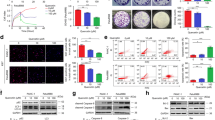Abstract
Zinc is essential for cell growth. Previous studies have shown that zinc concentration in breast cancer tissues is higher than that in normal breast tissues. Zinc cannot passively diffuse across cell membranes and specific zinc transporter proteins are required. Two gene families have been identified involved in zinc homeostasis. ZnT transporters reduce intracellular zinc while ZIP transporters increase intracellular zinc. In this study, three human zinc transporter members: ZnT-1, ZIP2 and LIV-1 were chosen. We aimed to determine the effect of flaxseed lignan on the growth of ER-negative breast cancer cells in a nude mice model and observe the effect of flaxseed lignan on the regulation of the three zinc transporter in mRNA level. Nude mice were xenografted with human breast cancer cell line MDA-MB-231 and 6 weeks later were fed either the basal diet (BD) or BD supplemented with 10% FS and SDG for 5 weeks. The SDG levels were equivalent to the amounts in the 10% FS. RT-PCR was performed. Compared with the BD group, the tumor growth rate was significantly lower (P < 0. 05) in the FS and SDG group. ZnT-1 mRNA level in mammary tumor was increased in SDG group and decreased in FS group, but no significant difference was found. Extremely low amplification of ZIP2 from mRNA was detected, with no difference between the treatment groups. LIV-1 mRNA expression of SDG group increases compared with BD group. In FS group, it significantly increases nearly 9 times than that in BD group (P < 0. 005).




Similar content being viewed by others
References
Mills BJ, Broghamer WL, Higgins PJ, Lindeman RD (1984) Inhibition of tumor growth by zinc depletion of rats. J Nutr 114:746–752
Santoliquido PM, Southwick HW, Olwin JH (1976) Trace metal levels in cancer of the breast. Surg Gynecol Obstet 142:65–70
Lee R, Woo W, Wu B et al (2003) Zinc accumulation in N-methyl-N-nitrosourea-induced rat mammary tumors is accompanied by an altered expression of ZnT-1 and metallothionein. Exp Biol Med (Maywood) 228(6):689–696
Thomoson LU (1995) Flaxseed, lignans, and cancer. In: Cunnane SC, Thomoson LU (eds) Flaxseed in human nutrition. AOCS Press, Champaign, IL, pp 219–236
Nebe B, Peters A, Duske K et al (2006) Influence of phytoestrogens on the proliferation and expression of adhesion receptors in human mammary epithelial cells in vitro. Eur J Cancer Prev 15(5):405–415
Serraino M, Thompson LU (1992) The effect of flaxseed supplementation on the initiation and promotional stages of mammary tumorigenesis. Nutr Cancer 17(2):153–159
Thompson LU, Rickard SE, Orcheson LJ et al (1996) Flaxseed and its lignan and oil components reduce mammary tumor growth at a late stage of carcinogenesis. Carcinogenesis 17(6):1373–1376
Rickard SE, Yuan YV, Chen J, Thompson LU (1999) Dose effects of flaxseed and its lignan on N-methyl-N-nitrosourea-induced mammary tumorigenesis in rats. Nutr Cancer 35(1):50–57
Chen J, Stavro PM, Thompson LU (2002) Dietary flaxseed inhibits human breast cancer growth and metastasis and downregulates expression of insulin-like growth factor and epidermal growth factor receptor. Nutr Cancer 43(2):187–192
Wang L, Chen J, Thompson LU (2005) The inhibitory effect of flaxseed on the growth and metastasis of estrogen receptor negative human breast cancer xenograftsis attributed to both its lignan and oil components. Int J Cancer 116(5):793–798
Kitts DD, Yuan YV, Wijewickreme AN, Thompson LU (1999) Antioxidant activity of the flaxseed lignan secoisolariciresinol diglycoside and its mammalian lignan metabolites enterodiol and enterolactone. Mol Cell Biochem 202(1–2):91–100
Prasad K (2000) Antioxidant activity of secoisolariciresinol diglucoside-derived metabolites, secoisolariciresinol, enterodiol, and enterolactone. Int J Angiol 9(4):220–225
Rajesha J, Murthy KN, Kumar MK et al (2006) Antioxidant potentials of flaxseed by in vivo model. J Agric Food Chem 54(11):3794–3799
Hirano T, Fukuoka K, Oka K et al (1990) Antiproliferative activity of mammalian lignan derivatives against the human breast carcinoma cell line, ZR-75-1. Cancer Invest 8(6):595–602
Farina HG, Pomies M, Alonso DF, Gomez DE (2006) Antitumor and antiangiogenic activity of soy isoflavone genistein in mouse models of melanoma and breast cancer. Oncol Rep 16(4):885–891
Kambe T, Yamaguchi-Iwai Y, Sasaki R et al (2004) Overview of mammalian zinc transporters. Cell Mol Life Sci 61(1):49–68 Review
Gaither LA, Eide DJ (2001) Eukaryotic zinc transporters and their regulation. Biometals 14(3–4):251–270 Review
Beyersmann D, Haase H (2001) Functions of zinc in signaling, proliferation and differentiation of mammalian cells. BioMetals 14:331–341
Vallee BL, Falchuk KH (1993) The biochemical basis of zinc physiology. Physiol Rev 73:79–118
Michael JD, Teresa MM, Arnold H et al (2000) Metalloproteinases: role in breast carcinogenesis, invasion and metastasis. Breast Cancer Res 2:252–257
Palmiter RD, Findley SD (1995) Cloning and functional characterization of a mammalian zinc transporter that confers resistance to zinc. EMBO J 14:639–649
Franklin RB, Ma J, Zou J, Guan Z, Kukoyi BI et al (2003) Human ZIP1 is a major zinc uptake transporter for the accumulation of zinc in prostate cells. J Inorg Biochem 96:435–442
Manning DL, Daly RJ, Lord PG, Kelly KF, Green CD (1988) Effects of oestrogen on the expression of a 4.4 kb mRNA in the ZR-75-1 human breast cancer cell line. Mol Cell Endocrinol 59:205–212
Fong LY, Mancini R, Nakagawa H, Rustgi AK, Huebner K (2003) Combined cyclin D1 overexpression and zinc deficiency disrupts cell cycle and accelerates mouse forestomach carcinogenesis. Cancer Res 63:4244–4252
Acknowledgments
We thank Dr. P. Winterhalter and Melanie Stuertz for the pure standards of SDG.
Author information
Authors and Affiliations
Corresponding author
Rights and permissions
About this article
Cite this article
Zhang, Ly., Wang, Xl., Sun, Dx. et al. Regulation of zinc transporters by dietary flaxseed lignan in human breast cancer xenografts. Mol Biol Rep 35, 595–600 (2008). https://doi.org/10.1007/s11033-007-9129-8
Received:
Accepted:
Published:
Issue Date:
DOI: https://doi.org/10.1007/s11033-007-9129-8




